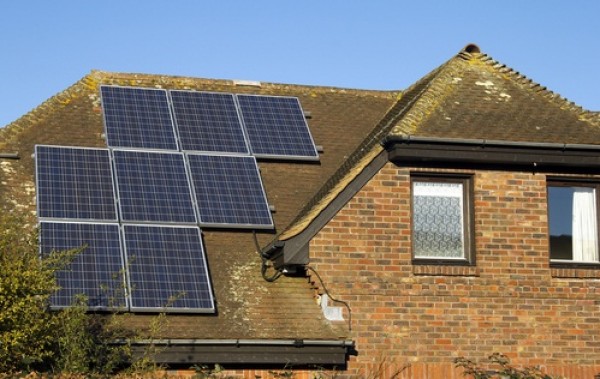Understanding Future Uses of Roofspace and Defining An Early Path to Profitable Roof Estate Investing
July 28th, 2012
Via EarthTechling, a report on the state of the residential solar industry:
Where’s the money in solar power these days? It’s not in manufacturing the stuff; companies that do that are dropping like flies.
No, the returns are in owning and installing the systems, with the combination of falling module prices and solid government subsidies turning that side of the business into a money maker.
Credit Suisse this week confirmed (again) distributed solar’s current appeal as a business venture, putting $100 million into SolarCity and $200 million into Sunrun to back new residential and commercial installations, most of which are done these days through leases or power-purchase agreements.
“The residential solar market is thriving right now, and the model Sunrun created for affordable home solar is driving that success,” Jerry Smith, managing director of the Credit Suisse Strategic Transactions Group, said in a statement. “For Credit Suisse, this partnership is an opportunity to work with a proven leader in a growing industry while investing in positive environmental change.”
The backing for SolarCity was actually the second part of a two-part deal; part one was also $100 million.
“Investments like this help us provide solar electricity at a discount to utility power to a wide range of homeowners and businesses,” said Benjamin Cook, SolarCity’s vice president of structured finance.
That’s the key here: At utility scale, solar (like wind) doesn’t yet compete with the cheapest fuel going, natural gas. But put solar on individual rooftops and it’s a whole different matter. The current cost, subsidy and regulatory structure allows the companies who own those systems to sell power to homeowners and businesses at rates that beat the retail price of electricity – especially in high-cost electricity markets like California.
Plus, not only are the rates competitive right now, but the residential solar deals come with the promise of 20 years of power at a guaranteed fixed price. That’s a big part of the lease/PPA pitch. Just last week on its blog, Sunrun highlighted news that the utility Pacific Gas & Electric was asking for rate increase that would average 5.2 percent each year over the next three years.
But “(if)f you’ve gone solar with Sunrun, you have little to worry about,” the company wrote. “Your rate is locked in and you won’t have to find out about sudden rate increases through blog posts like this one. For the average ratepayer without Sunrun, expect to pay about $11.31 extra each month in 2014. By 2016, average ratepayers could see a total $21.24 extra on their monthly utility bills.”
Credit Suisse – and other big-money investors, like Citi, U.S. Bankcorp and Google– are the ones providing the tax equity that make possible these arrangements, in which homeowners or businesses pay little or even no money up front.
Of the people in California who go solar, 70 percent now do so by leasing the panels or by buying their rooftop power, according to a recent PV Solar Report. This method is helping open up solar to demographics beyond the old core constituency of upper-middle-class and upper-class citizens, too: Analysts with the U.S. Department of Energy’s National Renewable Energy Laboratory say the model is being adopted in less affluent neighborhoods that had avoided customer-owned systems.
This entry was posted on Saturday, July 28th, 2012 at 6:00 am and is filed under Uncategorized. You can follow any responses to this entry through the RSS 2.0 feed. You can leave a response, or trackback from your own site.
Leave a Reply
You must be logged in to post a comment.
Educated at Yale University (Bachelor of Arts - History) and Harvard (Master in Public Policy - International Development), Monty Simus has held a lifelong interest in environmental and conservation issues, primarily as they relate to freshwater scarcity, renewable energy, and national park policy. Working from a water-scarce base in Las Vegas with his wife and son, he is the founder of Water Politics, an organization dedicated to the identification and analysis of geopolitical water issues arising from the world’s growing and vast water deficits, and is also a co-founder of SmartMarkets, an eco-preneurial venture that applies web 2.0 technology and online social networking innovations to motivate energy & water conservation. He previously worked for an independent power producer in Central Asia; co-authored an article appearing in the Summer 2010 issue of the Tulane Environmental Law Journal, titled: “The Water Ethic: The Inexorable Birth Of A Certain Alienable Right”; and authored an article appearing in the inaugural issue of Johns Hopkins University's Global Water Magazine in July 2010 titled: “H2Own: The Water Ethic and an Equitable Market for the Exchange of Individual Water Efficiency Credits.”
